
| Getting in the Right Frame of Mind | top |

| Seven Actions for a Successful Career | top |
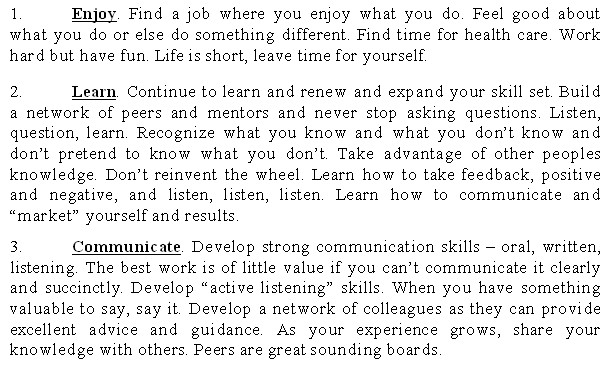
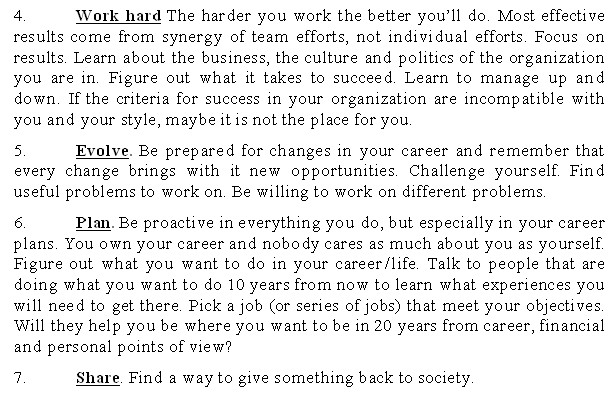
| Paradigms | top |
A paradigm is a model or pattern based on a set of rules that defines boundaries and specifies how
to be successful at and within these boundaries. Success is measured in terms of the problems you solve using these rules.
Paradigm shifts can occur instantaneously, or they can evolve over a period of time.
These transitions move us from seeing the world in one way to seeing it in an entirely different way.
When a paradigm shifts, a new model based on a new set of rules replaces the old model.
The new rules establish new boundaries and allow for solutions to problems that were previously deemed unsolvable.
All practitioners of the old paradigm are returned to "the starting line" and are again on equal footing because the old rules no longer apply.
Paradigm paralysis is a situation in which someone (or some organization) becomes frozen - that is, hopelessly locked into the idea that what was successful in the past will continue to be successful in the future.
Paradigm pioneers are people who have the courage to escape from paradigm paralysis by breaking the existing rules when success is not guaranteed. They realize that there are no easy roads when traveling in uncharted territory, so they cut new pathways, making the route safe and easy for others to follow.

| Vision | top |
| Teamwork | top |
As problems become more complex and interdisciplinary in nature,
their solutions tend to require the assembly of groups of people with different areas of expertise.
These kinds of problem-solving activities will require your interaction with other people, either one-on-one or in group meetings.
| Establishing a Creative Team Environment | top |
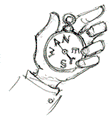 |
"Don't give people goals; give them directions (i.e., roughly aim them)." |
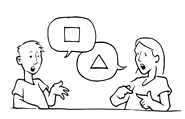 |
"Encourage contrarian thinking." Dissent stimulates discussion, prompting others to make more perceptive observations. It ultimately influences decision making for the better." |
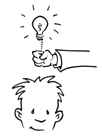 |
"Build a textured environment to extend not just people's aspirations but their sensibilities." You can't buy creativity, but you can inspire it. Creative people require an atmosphere conducive to thinking in nonstandard ways. The work environment needs to be informal and relaxed." |
 |
"Build emotion into the system." Defensiveness is the bane of all passion-filled creative work. One way to keep defenses down is to encourage problem-finding as well as problem-solving. The world is moving so fast that problems are being created all the time. The people who can find them have tremendous powers of creative observation." |
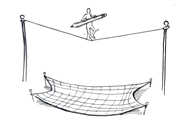 |
"The safer you make the situation, the higher you can raise the challenge." The workplace should be safe, so that the workers are not afraid to take risks and make mistakes, but the standards should be set high." |
 |
"Encourage accountability over responsibility." Traditional responsibilities, like punching a clock from nine to five, can inhibit creativity. Instead, people should be made accountable for the results of their work." |
 |
"Getting ordinary people to reach beyond themselves and do extraordinary things can be the result of establishing a nurturing creative environment." To establish this type of atmosphere requires the reconciliation of traditional corporate attitudes with more iconoclastic entrepreneurial attitudes. If this fine line can be traversed without abandoning the very characteristics that have led to a company's success in the past, much progress can be made." |
Courtesy: Sculley, John and John A. Byrne, Odyssey: Pepsi to Apple... A Journey of Advertising Ideas and the Future, Harper & Row, New York, 1987.
| Conflict Resolution | top |



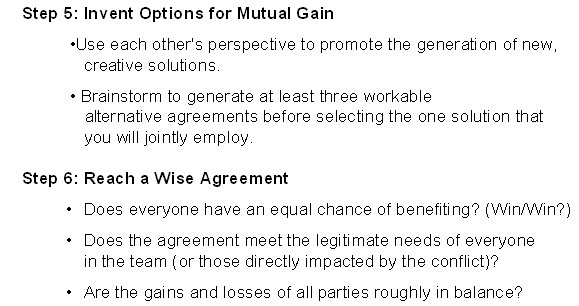
| Getting Unstuck | top |
| Problem Solving Quotable Quotes | top |
